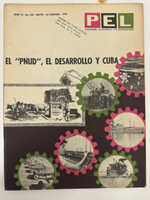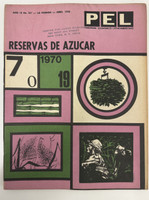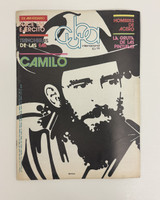- Travel
-
Exhibits
- La Portada Cubana
- Immortal Cuba: Artists Take on Their Heroes
- Seattle Poster Exhibit
- Sandra Dooley & Alejandrina Cué
- The Art of Wayacón
- Cuban Folk Art
- Cuba In Black And White
- 25 Years of Cuban Art Space
- Summer Folk Art Expo
- ¡SPRING AWAKENING FROM CUBA!
- Celebrating The Art Of Cuban Women
- Celebrating Paper, Affordable Art from Cuba
- Art of the Revolution
- Outsider Art
- Lost and Found
- En la lucha: Celebrating Cuban Women and Their Art
- Cuban Art Stash
- 100 Fires: 5 Cienfuegos Artists' Work on Paper
- Waya + Monte! Magic Realism in Cienfuegos
- Viva Cuba Viva! Poster Show
- Cultivando Sueños
- Black Lives Matter in Cuba Jan 9-March 27
- Leandro Soto: Crónicas visuales
- Cuban Canvas
-
Archive
- Global Reflection 2018: Spirit and Community
- Exhibit in the cloud: Contemporary Works on Paper
- MADE IN CUBA! MINNEAPOLIS EXHIBIT
- Cuban Posters and Photography from CCS collection
- AUTUMN SALE! Sept/Oct 2017
- SPRING ARTS AND CRAFT SALE
- Vuelo Directo/Non Stop: Alberto & Alejandro Lescay
- The Many Faces of Fidel
- Somos
- Made in Cuba!
- The US empire in Cuban graphics
- Made in Cuba/Seattle exhibit
- Entre Nos
- Looking Back
- Cuban Art Space
- Membership/Donate
- About Us
- Cuba News
-
This July 1970 issue of PEL (Panorama Económico Latinoamericano) examines global rice production and pricing, addressing food security concerns across Latin America and the Third World. The cover features bold woodcut-style illustrations in red, pink, black, and cream depicting the rice production cycle: a mechanized combine harvester with operator, scattered rice grains, detailed rice stalks, and Asian farmers working in paddies with conical hats. This visual narrative juxtaposes industrial and traditional agricultural methods, reflecting debates about appropriate technology and development models for agricultural modernization in the Global South.
This issue marks a significant transition for the publication, as announced inside: PEL would suspend its monthly magazine format after this number, replacing it with weekly economic bulletins sent directly to subscribers. This shift reflected Prensa Latina's evolving strategy to provide more rapid, targeted economic information to newspapers and specialized publications throughout Latin America, competing with mainstream wire services' economic coverage. The magazine's analysis of rice markets carried particular resonance for Cuba, which had diversified its agricultural production beyond sugar monoculture partly through rice cultivation. Published during the aftermath of Cuba's ambitious but ultimately unsuccessful 10-million-ton sugar harvest, this final monthly issue demonstrated how PEL positioned Cuban economic analysis within broader Third World struggles over agricultural development, food sovereignty, and resistance to dependency on First World markets and agribusiness corporations.
-
-
Discover More at the Center for Cuban Studies







